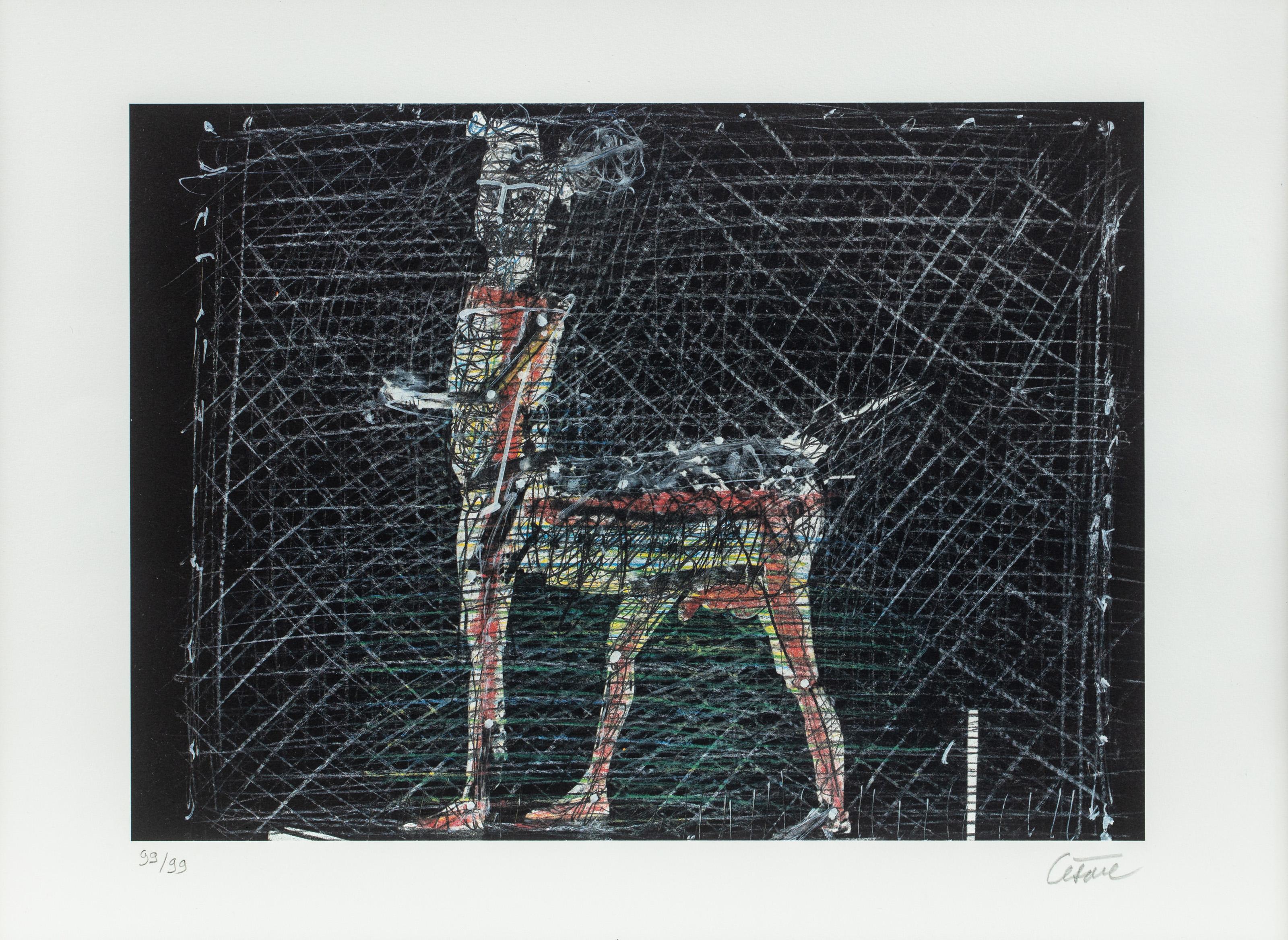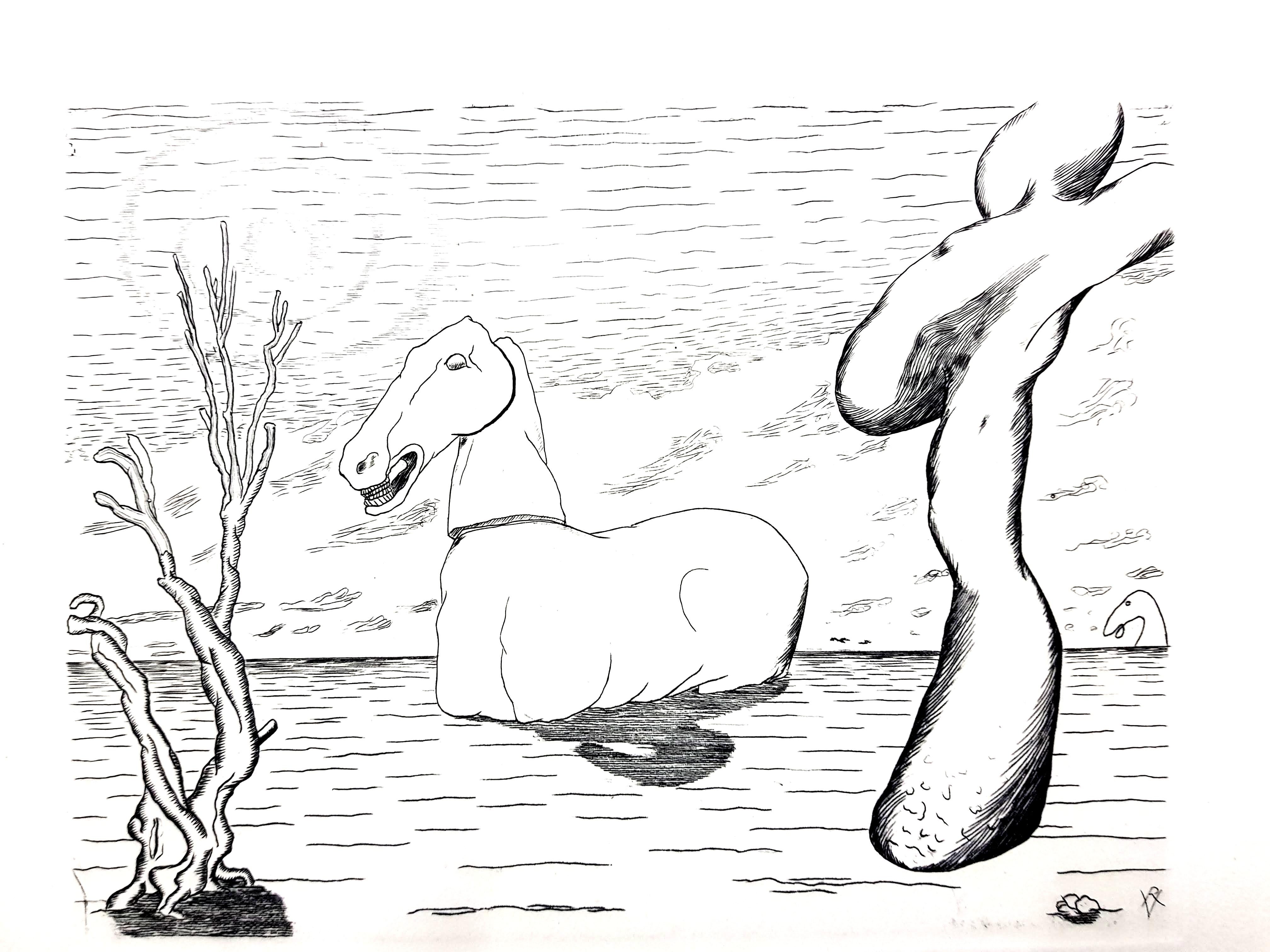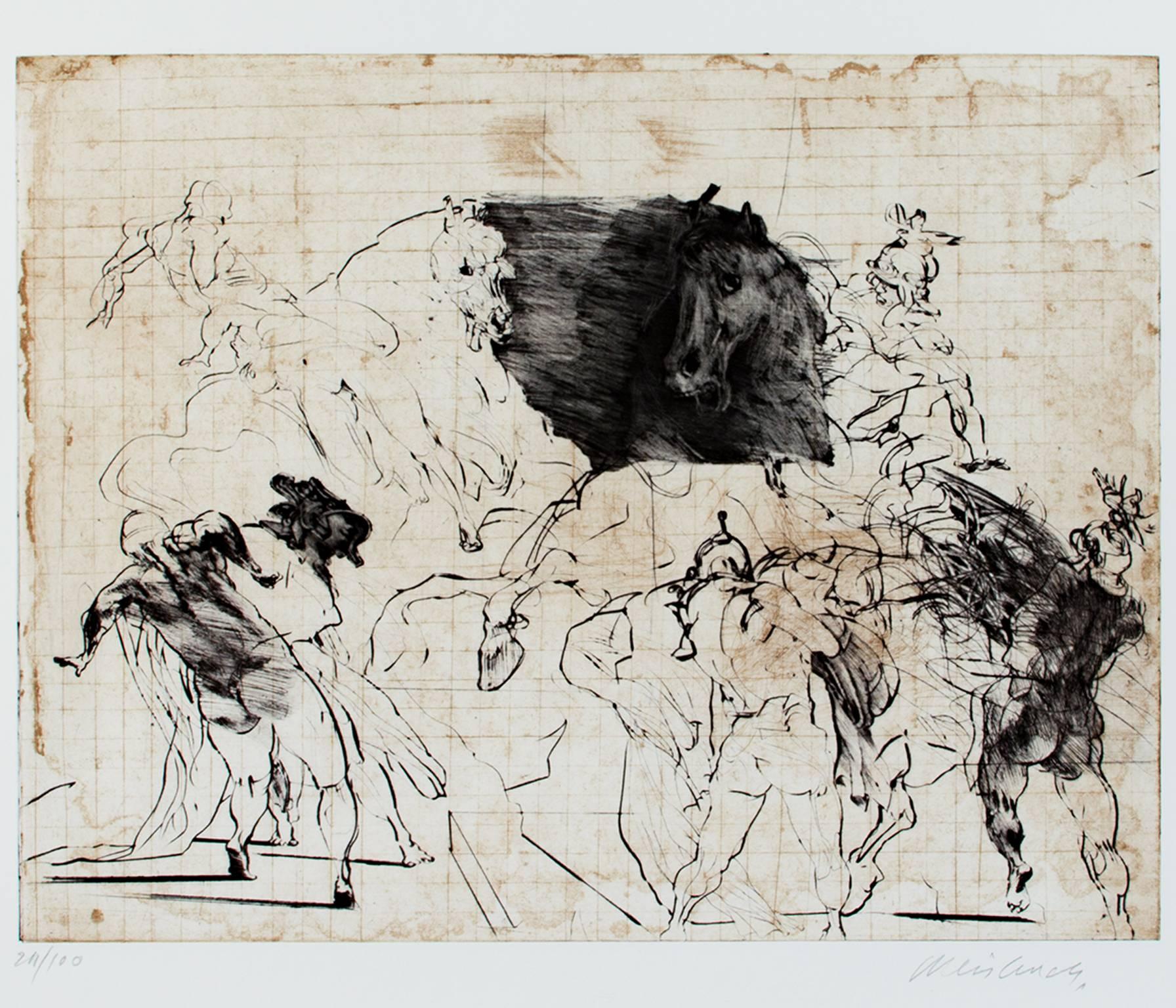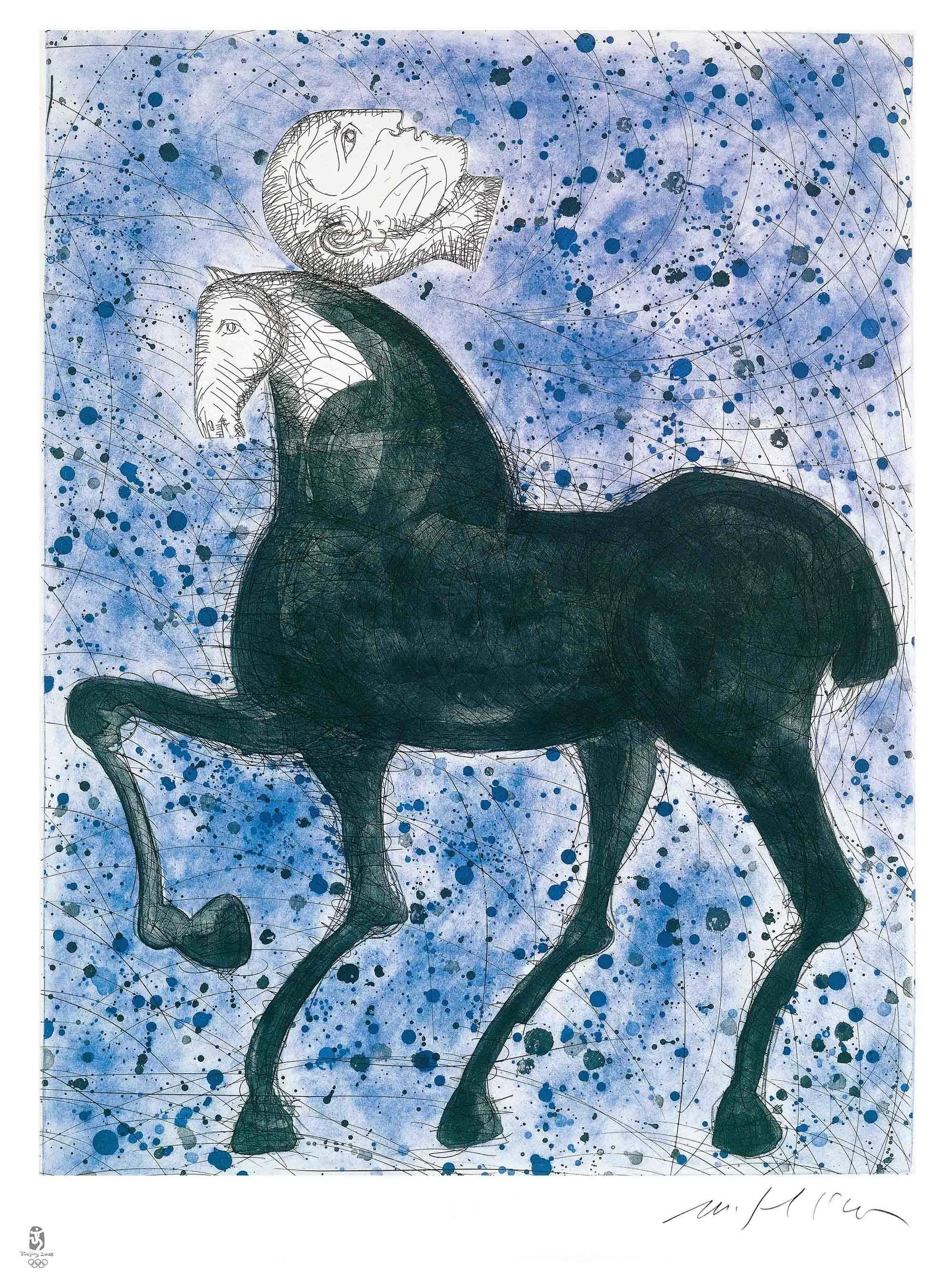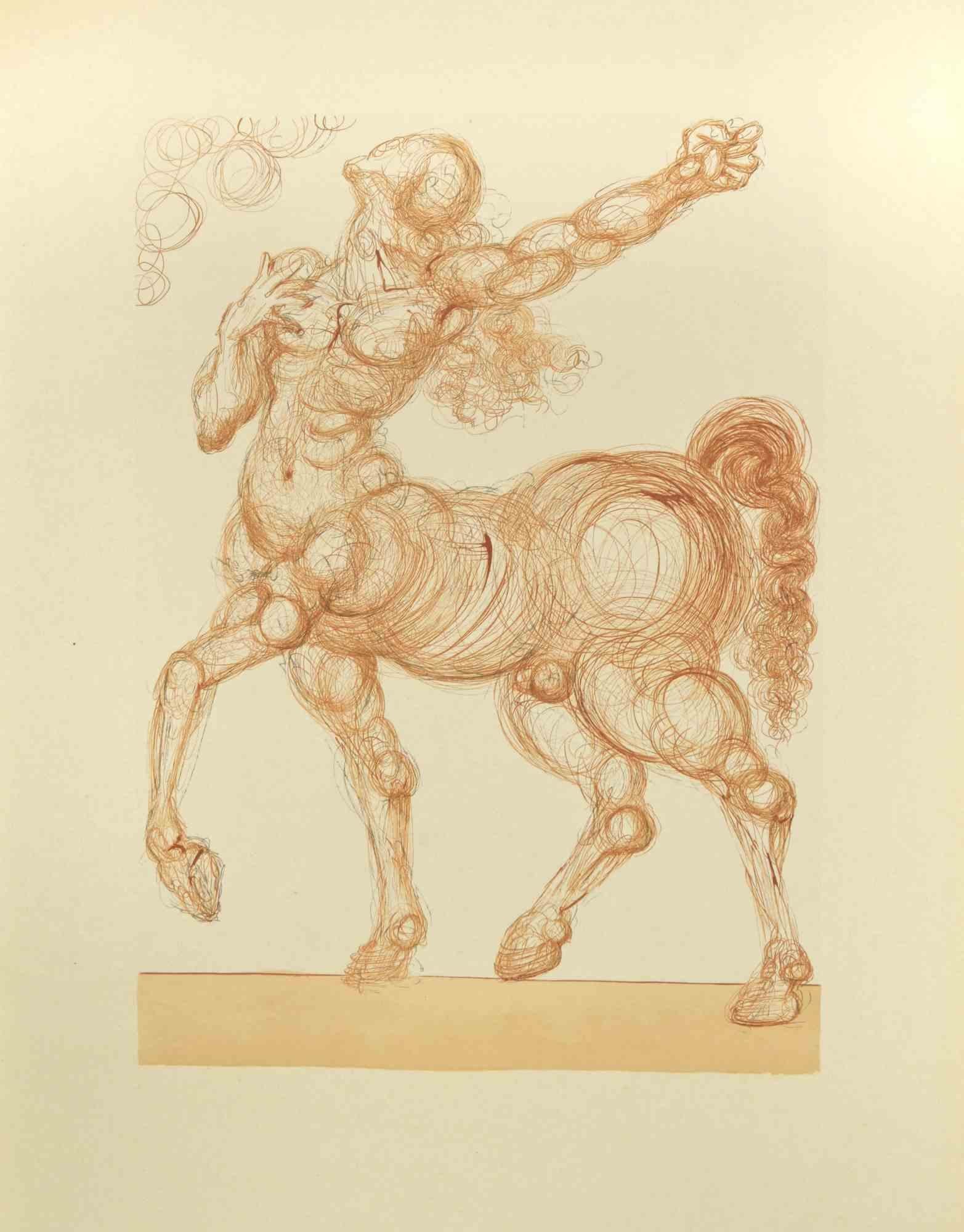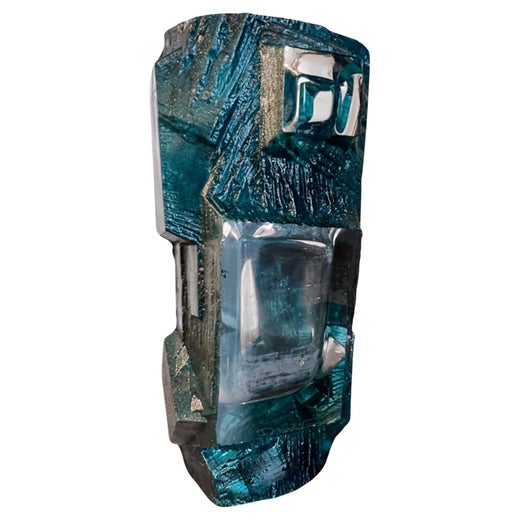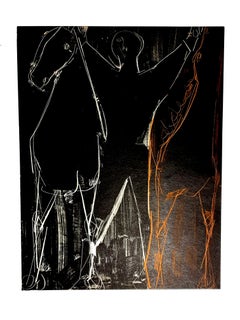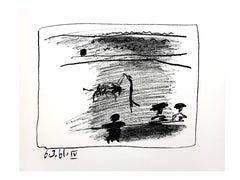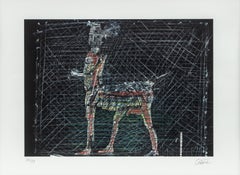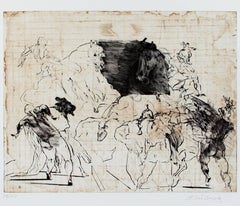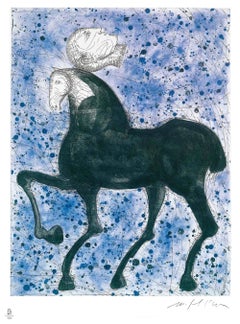Items Similar to César - Centaur - Picasso's Homage - Original Signed Etching
Want more images or videos?
Request additional images or videos from the seller
1 of 16
César BaldacciniCésar - Centaur - Picasso's Homage - Original Signed Etching1985
1985
$2,859.68
£2,108.09
€2,400
CA$3,915.18
A$4,342.22
CHF 2,280.32
MX$53,325.59
NOK 28,866.72
SEK 27,221.70
DKK 18,264.77
Shipping
Retrieving quote...The 1stDibs Promise:
Authenticity Guarantee,
Money-Back Guarantee,
24-Hour Cancellation
About the Item
César Baldaccini
Original Etching
Dimensions: 56.5 x 40 cm
Signed and Numbered
Edition of 99
It is the only original etching ever made by César.
César Baldaccini was born in Marseille in 1921. At the age of 12, he left the school to help his father, cooper. At 15 years old, he studied at the Art college of Marseille. He took evening drawing teachings, and then was interested in sculpture until 1939.
In 1942, César received a scholarship and went to Paris. He studied ten years at the School of Beaux-Arts; he worked in the studios of Gaumont and Alfred Jeanniot and was named “Grand Massier” (teacher) of this school. At that time, he was living in the same house as Alberto Giacometti.
In 1944, short of resources, he went to Marseille, then return to Paris, next year. With the 50s, he made discovered his work through his first exhibitions. One of its works (« The fish ») obtained a place in the Museum of Modern Art in Paris (1955). Henceforth, he exhibited ceaselessly, participating in numerous “Salons” in France and abroad. César received numerous prices there. He got personal exhibitions everywhere (Japan, the United States, Holland, France, Italy, etc.). Important retrospectives came, later. In 1970, he was named professor a foreman to the School of Beaux-Arts in Paris.
During his all life, Caesar was stimulated by « the love of the profession » and by an extraordinary will to innovate. The humor of the man did not miss and was noticed through his work. Pablo Picasso was his major reference, also Alberto Giacometti, Germaine Richier, Pablo Gargallo and Julio Gonzales. He got the maturity of his style and met the social consecration at the end of the 50s. The famous compressions, belonging by some to the dada movement, is born in 1960; they will make scandals. The huge imprints (thumb, breast, etc.), the use of the polyurethane, the Expansions, and then came the spectacles of his art that he liked to show.
César died in Paris in 1998.
- Creator:César Baldaccini (1921 - 1998, French)
- Creation Year:1985
- Dimensions:Height: 15.75 in (40 cm)Width: 22.25 in (56.5 cm)Depth: 0.4 in (1 cm)
- Medium:
- Movement & Style:
- Period:
- Condition:
- Gallery Location:Collonge Bellerive, Geneve, CH
- Reference Number:1stDibs: LU16123091643
César Baldaccini
César Baldaccini was born to immigrant Italian parents in Marseille and his life span was from 1921–98. He was considered to be one of the most important French artists and sculptors of the 20th century. Much of his work involved the compression of junk material and automobile material. He became associated with the 1960s Paris based Nouveau réalisme movement. Most importantly, Baldaccini just had a major retrospective at the Pompidou Center in Paris. His work is very collectible and desirable.
About the Seller
4.9
Platinum Seller
Premium sellers with a 4.7+ rating and 24-hour response times
Established in 2015
1stDibs seller since 2015
960 sales on 1stDibs
Typical response time: <1 hour
- ShippingRetrieving quote...Shipping from: Collonge Bellerive, Geneve, Switzerland
- Return Policy
Authenticity Guarantee
In the unlikely event there’s an issue with an item’s authenticity, contact us within 1 year for a full refund. DetailsMoney-Back Guarantee
If your item is not as described, is damaged in transit, or does not arrive, contact us within 7 days for a full refund. Details24-Hour Cancellation
You have a 24-hour grace period in which to reconsider your purchase, with no questions asked.Vetted Professional Sellers
Our world-class sellers must adhere to strict standards for service and quality, maintaining the integrity of our listings.Price-Match Guarantee
If you find that a seller listed the same item for a lower price elsewhere, we’ll match it.Trusted Global Delivery
Our best-in-class carrier network provides specialized shipping options worldwide, including custom delivery.More From This Seller
View AllRoger Vieillard - Surrealist Horse - Original Etching
By Roger Vieillard
Located in Collonge Bellerive, Geneve, CH
Roger Vieillard - Surrealist Horse - Original Etching
Paris, Le Gerbier, 1946
Edition of 340
Roger Vieillard was born in Mans, France on February 9, 1907 and was classically educate...
Category
1940s Modern Portrait Prints
Materials
Etching
Marino Marini - Horses - Original Lithograph
By Marino Marini
Located in Collonge Bellerive, Geneve, CH
Marino Marini - Horses - Original Lithograph
1951
Dimensions: 32 x 24 cm
From the art review XXe siècle
Unsigned and unumbered as issued
Category
1950s Surrealist Animal Prints
Materials
Lithograph
Pablo Picasso - Les Banderillas - Original Lithograph
By Pablo Picasso
Located in Collonge Bellerive, Geneve, CH
Original Lithograph by Picasso
Atelier Mourlot.
Paper: Vélin.
Dimensions : 9 5/8 x 12 7/16 inches
Bloch 1017; Cramer 113; Mourlot 350
Category
1960s Modern Animal Prints
Materials
Lithograph
Jean Cocteau - Bulls - Original Lithograph
By Jean Cocteau
Located in Collonge Bellerive, Geneve, CH
Original Lithograph by Jean Cocteau
Title: Taureaux
Signed in the plate
Dimensions: 40 x 30 cm
Edition: 200
Luxury print edition from the portfolio of Trinckvel
1965
From the last po...
Category
1960s Modern More Prints
Materials
Lithograph
Pietro Consagra - Composition - Original Etching
By Pietro Consagra
Located in Collonge Bellerive, Geneve, CH
Pietro Consagra - Composition - Original Etching
1959
Dimensions: 32 x 24 cm
From the art review XXe siècle
Unsigned and unumbered as issued
Category
1950s Surrealist Abstract Prints
Materials
Etching
Pablo Picasso (after) Helene Chez Archimede - Wood Engraving
By (after) Pablo Picasso
Located in Collonge Bellerive, Geneve, CH
Pablo Picasso (after)
Helene Chez Archimede
Medium: engraved on wood by Georges Aubert
Dimensions: 44 x 33 cm
Portfolio: Helen Chez Archimede
Year: 1955
Edition: 240 (Here it is on...
Category
1950s Modern Figurative Prints
Materials
Engraving
You May Also Like
Centaure, Hommage à Picasso, Surrealist Lithograph by César Baldaccini
By César Baldaccini
Located in Long Island City, NY
Cesar Baldaccini, French (1921 - 1998) - Centaure, Hommage a Picasso, Year: 1985, Medium: Lithograph, signed and numbered in pencil, Edition: 99/99, Size: 11.75 x 15.75 in. (29.8...
Category
1980s Surrealist Animal Prints
Materials
Lithograph
20th century drypoint etching figurative animal print horses sketch signed
By Claude Weisbuch
Located in Milwaukee, WI
"Combat Equestre" is an original lithograph by Claude Weisbuch. The artist signed the piece lower right and wrote the edition number (24/100) in the lower left. This piece depicts mu...
Category
1970s Modern Figurative Prints
Materials
Drypoint, Etching
Horse and Knight - Original Etching by Mimmo Paladino - 2008
By Mimmo Paladino
Located in Roma, IT
Hand signed etching, 2008
Dimensions: 94,5 x 70 cm
This work by is from the portfolio The Unique Collection for the Olympic Fine Arts 2008 presented during the Olympic Games and pro...
Category
Early 2000s Contemporary Animal Prints
Materials
Etching
The Dream (Centaur) - Original Screen Print Handsigned
By Antoni Clavé
Located in Paris, IDF
Antoni Clavé
The Dream (Centaur)
Original screen print, 1951
Handsigned in pencil
On paper 31.5 x 24 cm (c. 12.5 x 10 in)
Very good condition, edge of the sheet slightly yellowed
Category
1950s Modern Figurative Prints
Materials
Screen
The Centaur - Woodcut - 1963
By Salvador Dalí
Located in Roma, IT
The Centaur - Hell, Plate-26 is a woodcut print realized in 1963 for a series illustrating the Medieval poem of the "Divine Comedy" by Dante Alighieri.
Not signed, as issued.
Goo...
Category
1960s Surrealist Figurative Prints
Materials
Woodcut
Sketch II. Contemporary Figurative Etching Print, Animal, Horse, Polish artist
By Pawel Zablocki
Located in Warsaw, PL
Contemporary figurative etching print by Polish arist living in Canada, Pawel Zablocki. Print depicts a horse on a monochromatic backroung. Artist's unique technique of printmaking c...
Category
2010s Contemporary Figurative Prints
Materials
Paper, Etching
More Ways To Browse
Alberto Giacometti Signed
Fish Etching
Giacometti Etching
Japanese Fish Sculpture
Picasso Etching Signed 1939
Centaur Sculpture
Cesar Baldaccini
Cesar Compression
Cesar Thumb
Pablo Gargallo
Vietnam Rug
Andre Moret
Andy Warhol Cow Wallpaper
Audubon Pelican
Bighorn Ram
Dali Rhinoceros
Hunt Slonem Bunny Print
Janet Turner Art
